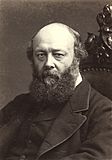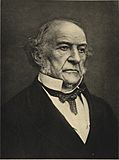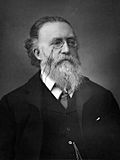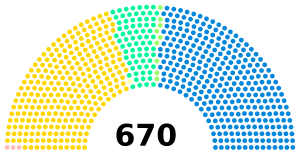1892 United Kingdom general election facts for kids
|
|||||||||||||||||||||||||||||||||||||||||||||
|
|
|||||||||||||||||||||||||||||||||||||||||||||
|
All 670 seats in the House of Commons 336 seats needed for a majority |
|||||||||||||||||||||||||||||||||||||||||||||
|---|---|---|---|---|---|---|---|---|---|---|---|---|---|---|---|---|---|---|---|---|---|---|---|---|---|---|---|---|---|---|---|---|---|---|---|---|---|---|---|---|---|---|---|---|---|
| Turnout | 77.4% | ||||||||||||||||||||||||||||||||||||||||||||
|
|||||||||||||||||||||||||||||||||||||||||||||
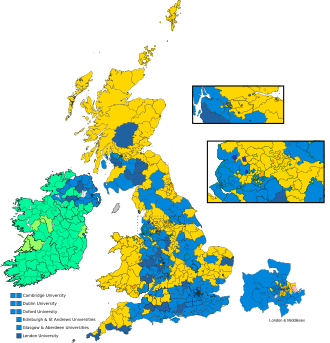
Colours denote the winning party
|
|||||||||||||||||||||||||||||||||||||||||||||
|
|||||||||||||||||||||||||||||||||||||||||||||
The 1892 United Kingdom general election was a big event where people across the United Kingdom voted for their representatives. This election took place from July 4 to July 26, 1892. It was a time when the country decided who would lead the government.
The main goal of a general election is to choose Members of Parliament (MPs). These MPs then go to the House of Commons to make laws and represent the people. In 1892, all 670 seats in the House of Commons were up for election.
Before the election, the Conservatives were in charge, led by Lord Salisbury. After the votes were counted, the Conservatives still won the most seats. However, they did not win enough seats to have a majority. A majority means having more than half of all the seats, which allows a party to govern without needing help from other parties.
The Liberals, led by William Ewart Gladstone, gained 80 more seats than they had in the previous election in 1886. This meant that even though the Conservatives had the most seats, they couldn't form a government on their own.
Contents
Election Outcome
Since the Conservatives didn't have a majority, Lord Salisbury refused to step down right away. He waited to see if he would lose a special vote called a vote of no confidence. This vote happened on August 11, and Lord Salisbury's government was defeated.
After this, William Ewart Gladstone formed a new government. His Liberal Party didn't have a majority on its own either. So, they had to rely on support from other groups, especially the Irish Nationalist parties.
Irish Nationalist Parties
The Irish Nationalist movement wanted Ireland to have more control over its own affairs, a policy known as Home Rule. Even though the Irish Nationalist vote was split into different groups, like the Parnellites and anti-Parnellites, they still had a strong presence in Parliament. Their support was very important for Gladstone's new government.
Liberal Party's Plan
Between 1886 and 1887, the Liberal Party tried to unite its different groups, but it didn't fully work. However, Gladstone kept strong control over the main Liberal Party organization, especially the National Liberal Federation. He used their yearly meetings to bring together different Liberal ideas.
A very important meeting was held in Newcastle in 1891. This meeting created a plan called the Newcastle Programme. This plan listed the main goals for the Liberal Party.
Newcastle Programme Goals
- Irish Home Rule: Giving Ireland its own government for local matters.
- Church Changes: Ending the official status of the Church in Wales and Scotland.
- Worker Rights: Reducing the number of hours people had to work in factories.
- Education: Making education free for everyone.
- Voting Reforms: Changing election rules to make voting fairer.
- Land Reforms: Making changes to how land was owned and used.
- House of Lords: Changing or getting rid of the House of Lords, which was the upper house of Parliament.
- Food Taxes: Removing taxes on basic foods.
Even though this program was very important at the time, the Liberal Party leaders later decided not to follow all of its ideas after they lost the 1895 election.
Results Summary
| Candidates | Votes | ||||||||||
|---|---|---|---|---|---|---|---|---|---|---|---|
| Party | Leader | Stood | Elected | Gained | Unseated | Net | % of total | % | No. | Net % | |
| Conservative and Liberal Unionist | Lord Salisbury | 606 | 314 | 21 | 100 | −79 | 46.87 | 46.99 | 2,028,586 | −4.4 | |
| Liberal | William Ewart Gladstone | 535 | 271 | 98 | 19 | +79 | 40.44 | 45.37 | 1,958,598 | +0.2 | |
| Irish National Federation | Justin McCarthy | 85 | 72 | +72 | 10.75 | 5.20 | 224,528 | N/A | |||
| Irish National League | John Redmond | 44 | 9 | +9 | 1.34 | 1.55 | 67,119 | N/A | |||
| Independent Labour | N/A | 9 | 3 | 3 | 0 | +3 | 0.45 | 0.51 | 22,198 | N/A | |
| Ind. Conservative | N/A | 4 | 0 | 0 | 0 | 0 | 0 | 0.13 | 5,556 | N/A | |
| Independent Liberal | N/A | 6 | 1 | 1 | 0 | +1 | 0.15 | 0.08 | 3,572 | N/A | |
| Scottish Trades Councils | Chisholm Robertson | 4 | 0 | 0 | 0 | 0 | 0 | 0.05 | 2,313 | N/A | |
| Independent Nationalist | N/A | 2 | 0 | 0 | 0 | 0 | 0 | 0.05 | 2,180 | N/A | |
| Scottish Parliamentary Labour | Keir Hardie | 3 | 0 | 0 | 0 | 0 | 0 | 0.04 | 1,866 | N/A | |
| Social Democratic Federation | H. M. Hyndman | 2 | 0 | 0 | 0 | 0 | 0 | 0.02 | 659 | N/A | |
| Independent | N/A | 3 | 0 | 0 | 0 | 0 | 0 | 0.00 | 137 | N/A | |
Electorate: 6,160,541 (5,614,202 in contested seats)
Turnout: 77.4%
Voting Summary
| Popular vote | ||||
|---|---|---|---|---|
| Conservative and Liberal Unionist | 46.99% | |||
| Liberal | 45.37% | |||
| Irish National Federation | 5.20% | |||
| Irish National League | 1.55% | |||
| Independent Labour | 0.51% | |||
| Independent Conservative | 0.13% | |||
| Independent Liberal | 0.08% | |||
| Others | 0.17% | |||
Seats Summary
| Parliamentary seats | ||||
|---|---|---|---|---|
| Conservative and Liberal Unionist | 46.72% | |||
| Liberal | 40.60% | |||
| Irish National Federation | 10.75% | |||
| Irish National League | 1.34% | |||
| Independent Labour | 0.45% | |||
| Independent Liberal | 0.15% | |||
See also
- List of MPs elected in the 1892 United Kingdom general election
- Parliamentary franchise in the United Kingdom 1885–1918
- 1892 United Kingdom general election in Ireland
- 1892 United Kingdom local elections


